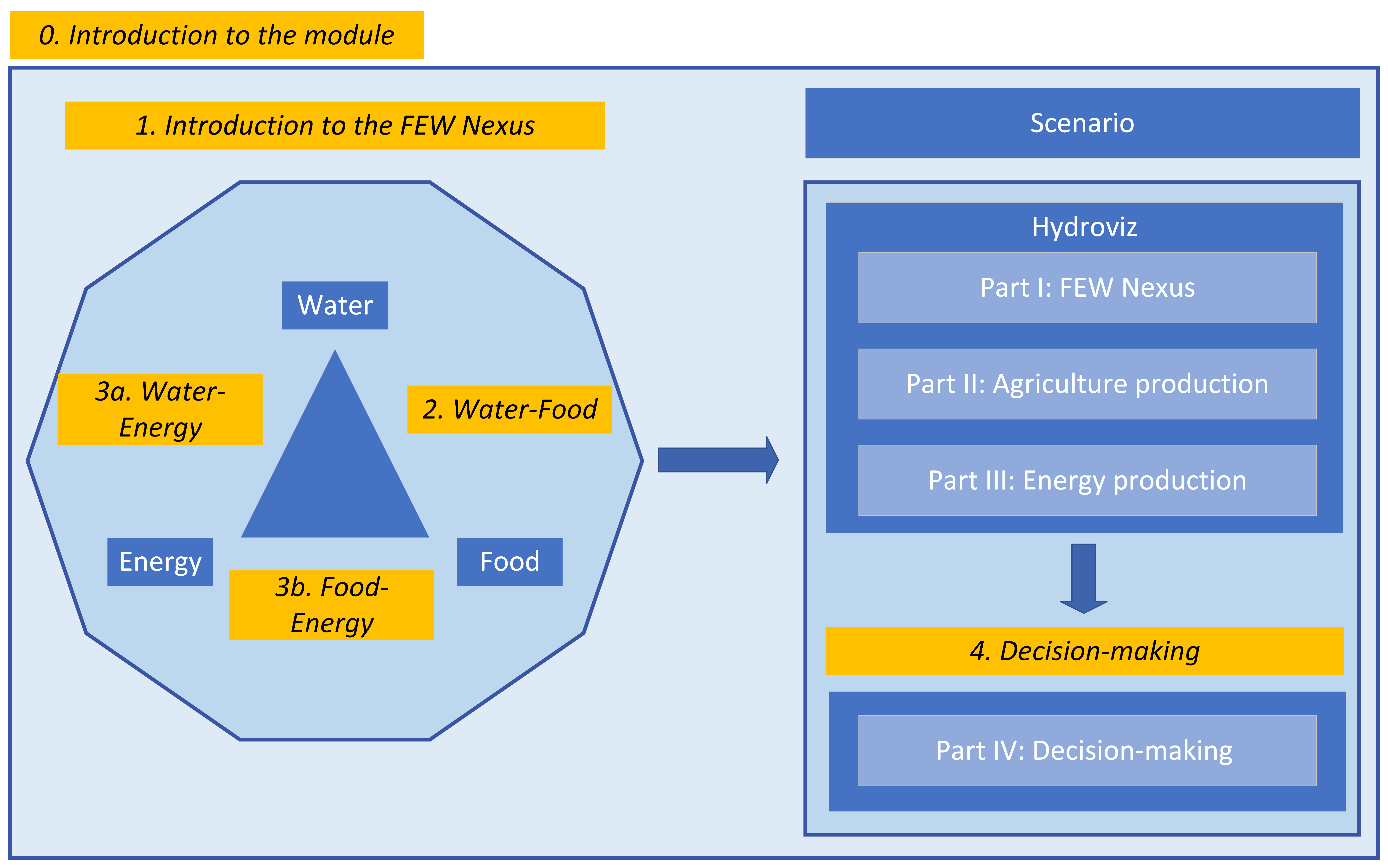Food-Energy-Water Nexus
University_of_Texas_at_Arlington

About This Course
This module revolves around the Food-Energy-Water Nexus (FEW). It is designed based on education research methods using learner-based pedagogy to provide training for undergraduate students about global and national perspectives regarding the FEW Nexus.
The module provides students opportunities to engage in a hands-on experience using Hydroviz, a data visualization tool that provides data about different variables of water availability and consumption, food production, and energy production in the country, to help students discover, explore, and apply critical thinking skills in a decision-making task for planning about a new carbon-free energy matrix in a selected region in the United States. The link to Hydroviz is: https://hydroviz.org/Lessons/Index/National/Nexus.
In this sense, throughout the course, students will work on a project which consists of four parts. In Part 1 of the project, students explore water, energy, and agriculture in a region of their choice in the United States. In Part 2, they will explore the food-water nexus in their region. In Part 3, they will explore the energy-water nexus in their region. Then, they will use this information to decide in Part 4 about a plan to address a problem described in a scenario.
Topics Covered
The module is divided into four main sections:
1. Introduction to the Food-Energy-Water Nexus
2. Water-Food Nexus
3. Water-Energy Nexus and Food-Energy Nexus
4. Decision-making
Notes for the Instructor
The module can be adapted by the instructor to fo fultill their own course's needs.
The module includes different activities that require discussion between the students. These can be adapted to a format that is most convenient for the course's needs.
The module includes different resources. Although these currently are linked to the sources, the instructor could remove these links to allow students to work on their research skills.
The scenario presented is meant to be general, which can be adapted by the instructor according to the course’s needs.
This is the scenario introduction instructors will find in the module:
Your organization, [NAME OF ORGANIZATION], is in charge of [GOAL OF THE ORGANIZATION] in [LOCATION]. The Board of the [NAME OF ORGANIZATION] is interested in working towards a sustainable use of water resources [THE GENERAL OBJECTIVE COULD BE FOCUSED ON WATER, ENERGY OR FOOD OUTCOMES]. [ADDITIONAL BACKGROUND INFORMATION THAT PROVIDES A RATIONALE BEHIND THE BOARD’S INTEREST].
Within this context, as analyst of the [ORGANIZATION’S DEPARTMENT], the Board has asked you to evaluate the uses of water resources in your region and to propose a plan that would support a better use of water resources while considering different factors [OTHER FACTORS CAN INCLUDE AGRICULTURE PRODUCTION, ENERGY PRODUCTION, HABITATS’ CONSERVATION, OTHER TOPICS OF INTEREST RELATED TO THE CASE].
To develop this plan, you will need to retrieve data from Hydroviz (a visualization tool that provides information about water use, agriculture production, and energy production in the United states) to evaluate the different patterns in water availability, water resource use, agricultural production, and energy generation in your region. This information will serve as the basis to develop a plan that helps minimize the impacts of the various footprints you have explored in the assignment. Your product must identify an alternative that responds to the needs of your region.
Estimated Time
This is a three-week module. Students are expected to engage with the learning materials at least 9 hours every week.
